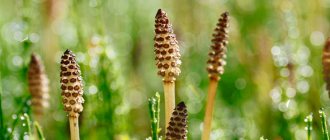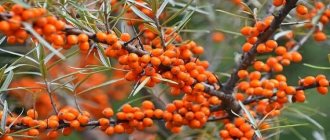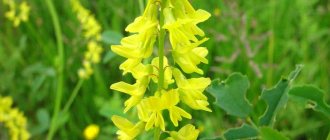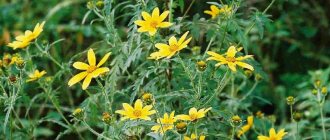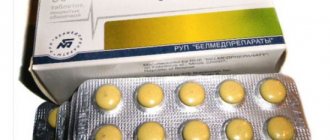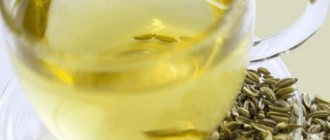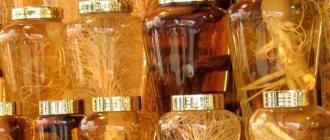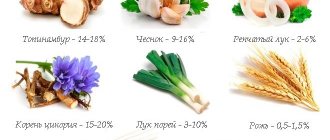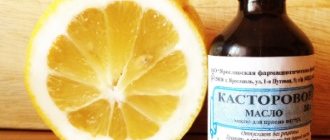The origin of this plant is still shrouded in mythical secrets. In ancient times, people believed that Astragalus wooliflora was a gift from the gods with amazing properties. Astragalus is truly an amazing herb. It grows in places where there is some gold in the soil and this precious element is also concentrated in micro doses in the plant. At one time, alchemists even hoped that astragalus would help them find the magical philosopher's stone. But this is not all the amazing facts about Astragalus woolly-flowered.
Medicinal and beneficial properties
The healing properties of the plant affect most human organs and systems.
What are the benefits of astragalus:
- Reduces the viability of viruses and bacteria.
- Activates the urinary system.
- Has a tonic effect.
- Improves blood clotting.
- Accelerates tissue and cell restoration.
- Normalizes digestion.
- Reduces arterial and intracranial pressure.
- Removes bile.
- Helps prevent early aging.
- Improves the functioning of the nervous system and brain.
- Prevents the destruction of liver cells.
- Dilates blood vessels and capillaries.
- Strengthens the immune system.
- Helps reduce blood sugar.
Astragalus root
Astragalus leaves
This is how astragalus blooms
Crescent astragalus (Astragalus falcatus)
Don Astragalus (Astragalus tanaiticus)
Chickpea Astragalus (Astragalus cicer)
Fruits and seeds of Astragalus hamosus
All parts of the plant have medicinal properties: roots, flowers, leaves, shoots. Sometimes seeds are also used.
Features of the impact on women and men
Astragalus helps women get rid of the following problems:
- Infertility. The herb helps normalize hormonal levels. By analogy with resveratrol, it regulates the production of progesterone and relieves inflammation that prevents conception. For treatment, it is recommended to take a decoction or tea.
- Prolapse of the uterus. Astragalus helps restore the tone of the pelvic floor muscles and eliminate the risk of complications. Therapy is carried out with a decoction of the plant.
- Polycystic ovary syndrome. The herb prevents the formation of new seals, eliminates factors that cause pathology: infections, hormonal disorders, stress.
Astragalus also treats male diseases:
- Impotence. The herb stimulates the production of testosterone, improves blood circulation in the pelvic area, and relieves inflammation. To eliminate the problem, use infusions from the root of the plant.
- Prostatitis. Astragalus helps men get rid of congestion and discomfort when urinating, and remove infections.
Anti-aging effects of astragalus, research
In 2021, a group of scientists from China analyzed research into the properties of astragalus. Experts reviewed 217 papers from different countries and described the effect of the plant. It was found that the herb activates processes in the body that promote rejuvenation, namely:
- reduces oxidative stress;
- increases endurance;
- strengthens the immune system;
- reduces the influence of toxins and poisonous substances;
- increases cell survival;
- restores brain activity;
- protects skin from photoaging;
- reduces the risk of developing cardiovascular diseases.
Contraindications, possible harm
Contraindications:
- Allergy to herbs of the legume family.
- Individual intolerance to one of the substances in the plant.
Astragalus can also cause harm to people with severe hypotension and acute urolithiasis. In the first case, the herb can reduce blood pressure to critical levels, in the second, it can increase the risk of duct blockage due to active kidney function.
When treating with astragalus, the recommended doses must be followed. Drug abuse leads to side effects:
- nausea;
- weaknesses;
- insomnia;
- intestinal dysfunction;
- a sharp decrease in pressure.
In overdose, the herb can suppress the human immune system. When taking large doses, the benefits of astragalus may become unnoticeable, and the current disease will cause more harm to the body due to a decrease in protective mechanisms.
Description of the plant
Astragalus is a genus of annual or perennial plants of the legume family. Most often, representatives of Astragalus are grass or subshrubs. Occasionally you can find a bush. The central rod is dense and grows deep into the ground. The leaves are small in size, oblong, lanceolate. They gather in 10-15 pairs.
The inflorescences, collected in groups of 10 small bud-shaped flowers, are white, purple, yellow, and variegated ones are less common. Flowering begins in late spring, fruiting occurs as early as the next month. Like other plants of the Legume family, Astragalus has round fruits.
The genus contains more than 1600 species. Most exhibit medicinal properties, but only some varieties are used for treatment.
Pregnant and lactating
You should not consume grass while carrying a child. The plant stimulates uterine contractions and can cause abortion. However, astragalus may be beneficial during childbirth. If a woman experiences weak contractions and slow dilatation of the cervix, traditional healers recommend taking an infusion or tea from grass shoots.
During pregnancy, external use of herbal remedies is allowed. Astragalus relieves bruises and abscesses, relieves inflammation on the skin, and prevents the development of infection in the wound.
It is not recommended to take the herb during lactation. The plant affects the composition of breast milk, saturates it with its active substances, which can cause allergies in the baby.
Precautionary measures
Many people mistakenly believe that if you take a natural remedy in fresh or dried form, then it cannot harm. If you use the plant thoughtlessly, drink it at any time and do not take into account contraindications, recommendations, you can only harm yourself.
Before use, you should consult a specialist to find out which persons are prohibited from using Astragalus. Especially allergy sufferers need to make sure that treatment with this herb is safe: taking the plant and its derivatives can provoke an allergic reaction, including anaphylactic shock.
Is it possible for children
It is not recommended to give infusions, teas and decoctions with astragalus to children under 3 years of age. Afterwards, the child can take non-concentrated drinks with medicinal herbs. Astragalus helps:
- improve memory;
- treat colds;
- relieve cough;
- relieve nervous tension;
- normalize the functioning of the gastrointestinal tract;
- eliminate the consequences of poisoning.
You should start taking medications with 1 teaspoon. Up to 6 years of age, children are allowed to give tea 150–200 ml per day, divided into 3 doses. In the therapy of schoolchildren, decoctions and infusions can be used, but the dosage must be reduced by 50%. From the age of 12, the daily norm can be gradually increased to an adult level.
Medicines containing astragalus are allowed from 1 year of age. The regimen of use depends on the age of the baby and the identified pathology. When treating, you should follow the advice of your pediatrician and the principles described in the official instructions.
Astragalus penduliflorus
Astragalus glycyphýllos (Astragalus glycyphýllos)
Chemical composition
Vitamins A, E, C, B9 were found in the plant. Astragalus is also rich in micro and macroelements. It contains:
- barium;
- manganese;
- iron;
- molybdenum;
- selenium;
- phosphorus;
- silicon;
- calcium;
- aluminum;
- cobalt;
- copper;
- zinc;
- magnesium;
- chromium;
- sodium;
- vanadium.
The plant is capable of accumulating substances contained in the soil. Astragalus is also rich in the following compounds:
- glycosides;
- saponins;
- sterols;
- flavonoids;
- astragalosides;
- coumarins;
- alkaloids;
- essential oils;
- phytosteroids.
Astragalus root
The concentration of compounds differs in different parts of the plant. The roots contain more sterols, flavonoids kuatakein, formocoketine, ononine, calycosin, alkaloids, and phytosteroids. The terrestrial zone of astragalus is more saturated with essential oils, flavonoids kaempferol, narcissin, isorhamnetin, quercetin, astragaloside, tannins, oxycoumarins, saponins.
Forms of release of pharmaceutical drugs
Examples:
- Dry root in cardboard and cellophane packages.
- Crushed leaves, flowers and shoots of the plant.
- Alcohol tincture of astragalus root. Used to eliminate heart failure, treat the liver, kidneys, relieve edema, reduce blood pressure, and strengthen the immune system.
- Liquid extract. Indications for use: prevention of heart attacks, strokes, acceleration of the body’s recovery after illness. The product is also used to strengthen the immune, cardiovascular, urinary, musculoskeletal, and endocrine systems.
- Capsules with astragalus extract. They are used for the same purposes as the liquid product.
- Syrup. Prescribed to adults and children for colds, hypertension, problems with the heart, kidneys, stomach, intestines, to relieve stress, and reduce cholesterol levels.
- Dietary supplements in the form of dragees, tablets, capsules. They are considered general strengthening agents.
- Sun Potion Astragalus Powder. Recommended for normalizing metabolism, relieving fatigue and stress, and increasing immunity.
Medicines with astragalus can also be purchased at animal pharmacies. In veterinary medicine, the herb is used to eliminate viral infections, prevent respiratory pathologies, stimulate the immune system, and improve appetite. Herbal preparations are sold under the brand names “Wamine”, “Fu Bang”.
Differences from other herbs
Examples:
- Hollywort is hairy. It differs from astragalus in its ability to eliminate ascites and cleanse the body of helminths.
- Sainfoin. Contains vitamin P or rutin. Better strengthens capillaries and veins.
- Sophora japonica. Helps get rid of hot flashes during menopause, cure stomach ulcers, has a more active effect on the respiratory system, but is less powerful in influencing the heart.
- Meadowsweet. Unlike astragalus, it does not accelerate wound healing, but prevents blood clotting and prevents the formation of blood clots.
- Turmeric. Better saturated with essential oils, contains a natural dye - curcumin. Inferior in concentration of antioxidants, flavonoids, micro and macroelements.
Astragalus onobrychis
Scientific research
Astragalus belongs to the group of medicinal plants of the legume family. A. membranaceus root has a long history of use in traditional Chinese medicine (TCM) and is often used along with other herbs as a tonic to enhance stamina, strength, and vitality. Astragalus extracts are sold as dietary supplements to improve immunity and reduce fatigue. The beneficial effects of astragalus are associated with its polysaccharides and triterpenoid saponin compounds. In vitro and animal studies show that astragalus and its constituents have antioxidant (1), anti-inflammatory and antiviral (2) activities, and also have a protective effect on the heart (3), kidneys (4)
In another study, astragalus extract helped combat cancer-related fatigue (5) . Meta-analyses suggest that astragalus contributed to the reduction of chemotherapy-induced nausea and vomiting (6).
Use for medicinal purposes in diseases
Thanks to the wide range of medicinal properties, astragalus herb has been used to treat and prevent dozens of pathologies.
Examples of influence and recommendations for use:
- Hypertension. Astragalus helps to dilate blood vessels, due to which the pressure gradually decreases. The herb prevents heart attacks, strokes and other cardiovascular diseases, strengthens capillaries, improves blood circulation, and normalizes the transmission of nerve impulses. To prevent and eliminate pathologies, you need to take an infusion of the leaves and flowers of the plant, 2 tablespoons 3 times a day for 1.5 months. Then take a break for 2-3 weeks.
- Diabetes. Astragalus lowers blood sugar levels, prevents the accumulation of bad cholesterol, and reduces the likelihood of complications. In case of illness, an infusion of astragalus root is useful. For diabetes mellitus, you need to take 50 ml of the drink 3 times a day for 3 months.
- Allergy. The herb accelerates the removal of pathogens from the body, relieves irritation and itching, and makes breathing easier. For treatment, alcohol tincture of astragalus and baths with herbal decoction are used. The first remedy is recommended to drink 20 drops 4 times a day until allergy symptoms disappear. Baths with herbs should be taken every 2 days for 10 minutes until the signs of allergy disappear.
- Prostatitis. Astragalus helps eliminate pathology and prevent re-exacerbation. A decoction is used for therapy. It should be drunk 100 ml per day for 2 months. For the purpose of prevention, you can use the infusion 3 tablespoons 2 times a day for a course of 3 weeks.
- Cancer prevention. The herb prevents the degeneration of cells into malignant ones, stops inflammatory processes that provoke oncology. To reduce the risk of pathology, you can take 1 glass of astragalus leaf tea 1-2 times a day every 3 months for 3 weeks. The plant can speed up recovery and eliminate the effects of chemotherapy. During the treatment and rehabilitation process, it is recommended to drink 1 tablespoon of herb root infusion 5 times a day. The use of astragalus should not replace the main methods of therapy, since the herb is only an adjuvant.
- Arthritis, arthrosis. The plant helps eliminate inflammation and pain, restore cartilage and tissue. For pathologies, it is useful to take a course of the decoction: take 500 ml of the drink daily for 3 months, then a break of 2 weeks and a new course. To relieve pain, you need to rub the problem areas with a tincture of the plant every day.
- Atherosclerosis, arrhythmia. To improve ECG readings and eliminate cholesterol plaques, it is recommended to consume 100 ml of infusion of astragalus roots or herbs 3 times a day for 2 weeks.
- Cardiosclerosis. To prevent the formation and growth of scars in the myocardium, it is useful to take an infusion of the leaves and flowering part of astragalus according to the following scheme: 100 ml 3 times a day 30 minutes before meals. The course of therapy is 5 weeks.
- Gastritis, ulcer. The herb can be used for high and low acidity. A decoction from the above-ground part or root helps eliminate inflammation. You need to take it 1 tablespoon 3 times a day for a month. For chronic pathology, preventive courses can be repeated every quarter. For ulcers, a decoction of astragalus with honey is useful. Take 3 tablespoons once a day with warm milk.
- Poisoning. To speed up the removal of toxins, it is recommended to drink half a glass of herbal infusion 3 times a day or consume 0.5 teaspoon of dry root with plenty of water. You can start taking it after vomiting stops. The herb has a bitter taste and can aggravate the symptom.
- Stomatitis. Astragalus can eliminate infection and promote wound healing. During therapy, you should rinse your mouth with a herbal decoction every 3 hours for 2 weeks. To strengthen the body, treatment can be supplemented by taking an infusion of shoots or roots according to the following scheme: 1 tablespoon 3-4 times a day.
- Bronchitis, cold. The plant helps to liquefy sputum, has a diaphoretic effect, and activates the body's natural defenses. In case of illness, it is useful to drink 3 tablespoons of infusion from the ground part of astragalus 2 times a day. Treatment is carried out for 2 weeks.
- Liver pathologies. To restore and prevent destruction of organ cells, it is recommended to use dry powder from roots or leaves. The product must be taken without water 3 times a day before meals. Continue therapy for 1.5 months, then take a break for 10 days.
- Myoma, fibroma. To reduce inflammation and prevent the spread of the tumor, medicinal douching with a decoction of the herb is recommended. For one procedure, use 200 ml of liquid. Apply treatment in the morning and evening.
Nutritional supplements
For treatment, you can use food supplements or dietary supplements (dietary supplements). They help cope with a large number of ailments, especially with complex therapy.
- Cardiovascular disorders: arrhythmia, clogged blood vessels, hypertension, atherosclerosis, hematopoietic disorders;
- Diabetes;
- Frequent attacks of headaches;
- Rheumatism;
- Reduced potency;
- Papillomas, boils, pustules, swelling;
- Bacterial diseases;
- Reduced immunity;
- Problems with the gastrointestinal tract;
- Some types of cancer.
Caution: Supplements cannot cure cancer, they help relieve symptoms and increase the body's strength to fight cancer during complex treatment. It is necessary to consult a specialist before starting treatment due to the presence of contraindications.
In addition to the main substance, dietary supplements contain auxiliary substances that improve the effects of Astragalus. The number of capsules taken depends on the concentration of the active substance. You must drink according to the instructions, do not exceed the dosage
X
Brewing while maintaining maximum benefits
To preserve vitamins, microelements and active compounds when brewing herbal remedies, you must adhere to the following principles:
- Use water heated to a temperature of no more than 70 degrees. Boiling water activates the destruction of complex substances, depriving drinks of some of their beneficial properties.
- Brew herbs and roots in a closed thermos. The container prevents the evaporation of essential oils and the rapid cooling of the liquid. Maintaining a stable temperature contributes to the full release of beneficial elements into the drink.
- Maintain a brewing time of at least 30 minutes. If raw materials are removed from water earlier, the liquid does not have time to be saturated with vitamins and active compounds.
Classic recipes for healing compounds
In folk and official medicine, the following recipes for preparing medicinal products are used:
- Tea. You can make it from the top part of the herb or use astragalus root. Method: pour 1 tablespoon of dry raw materials into a thermos, fill with hot water, and close. Leave for 30 minutes, strain.
- Infusion. Pour 2 tablespoons of dry grass or 1 tablespoon of chopped roots into 200 ml of hot water and leave for 2 hours.
- Decoction. Pour 2 tablespoons of dried leaves with flowers or 1 tablespoon of roots crushed to a powder into an enamel bowl, pour 200–250 ml of water. Place in a steam bath and leave for 30 minutes. Cool, filter.
- Alcohol tincture of herbs. Fill a glass jar halfway with dry leaves and flowers of the plant. Fill the remaining volume of the container with vodka or alcohol diluted with water to 40 degrees. Close the lid tightly and put it in a cool, dark place. We insist 3 weeks.
- Root tincture. Pour 40 g of raw materials into a jar, pour in 0.5 liters of vodka or diluted alcohol, and close. We put it in a dark place for 10 days. Shake the liquid daily and strain after preparation.
- Syrup. The product is not prepared at home, since its creation requires plants grown using a special method in soils enriched with selenium. But the product is freely sold in pharmacies.
- Oil extract. Used to treat wounds, skin rashes, cosmetic procedures, and rubbing. Prepare this way: grind 250 g of dry leaves, pour into a glass container, pour in 500 ml of oil heated to 60 degrees. We insist for 24 hours. Next, heat the composition for 30 minutes in a steam bath and filter.
- Decoction with honey. Place 200 g of honey in a water bath, add 20 g of dry astragalus herb, hold for 10 minutes.
What herbs go well with?
When making medicinal products, astragalus is rarely combined with other plant components. The herb has a high concentration of beneficial substances and is itself a potent remedy. However, in some dietary supplements it is supplemented with shiitake and reishi . Such drugs are classified as immunostimulants.
In traditional medicine recipes you can find other combinations:
- Chamomile, corn silk, horsetail, knotweed. The collection helps treat the kidneys and improves the functioning of the urinary system.
- Sagebrush. Together with astragalus, it helps eliminate chronic insomnia.
- Schisandra. Used for severe liver damage. The combination of plants reduces the disadvantages of fatty degeneration of the organ.
- Gray jaundice. Helps fight arrhythmia.
general characteristics
The common name “astragalus” today refers to more than two thousand plants common in the Northern Hemisphere. Most of them grow in Central Asia, Crimea and the Caucasus. Astragalus includes shrubs, subshrubs, herbaceous annual and perennial plants. But they are all recognized by their complex odd-pinnate leaves and flowers in axillary racemes, collected in umbrella inflorescences, spikelets or heads. But only one representative of this large family has powerful healing abilities - Astragalus wooliflora, which belongs to the legume family. This plant is popularly known as cat pea or astragalus fusiflora. Although botanists say that woolly-flowered and fluffy-flowered are two different astragalus.
Woolly-flowered astragalus is recognizable by the reddish fluff covering the ground part of the plant. This perennial herb grows up to half a meter. Its stems are covered with complex, odd-pinnate leaves. Another defining feature is the inflorescence. In this Astragalus it is a capitate raceme of 10-20 yellow moth flowers. Cat peas bloom in late spring - early summer. It bears fruit in small beans (about 1 cm in length) - hairy, ovoid or oval, which appear on the stems in July-September.
This type of astragalus is common in the Black Sea region, the Dnieper region, and the Volga-Don basin. It can be seen in abandoned cemeteries, on burial mounds, and in some clearings. Astragalus wooliflora tolerates different weather conditions well, but does not take root in livestock grazing areas.
Application in cosmetology
The use of astragalus herb and root can get rid of wrinkles, improve skin condition, and eliminate cellulite. Plant extract is added in the production of creams and lotions.
You can prepare the following at home:
- Rejuvenating mask. Mix 1 tablespoon of astragalus root infusion with 1 teaspoon of cottage cheese and the same amount of honey. Apply the resulting mass to the face and décolleté area and leave for 15 minutes. Wash off with warm water. We carry out the procedure once a week.
- Compress. The product helps smooth out wrinkles and eliminate rashes. Preparation: make a decoction of astragalus herb, soak a clean gauze cloth in it. Place the cloth on your face for 20 minutes. If the material dries out, re-wet it.
- Remedy for cellulite. Mix the herbal infusion with candied honey in equal proportions. Rub the resulting product onto problem areas and wrap them in polyethylene. Wash off after 30 minutes with warm water.
- Moisturizing mask. Recipe: Mix 1 tablespoon of herbal tincture with 1 teaspoon of olive oil and 1 tablespoon of cucumber juice. We soak a napkin made of thin natural fabric with the mixture, apply it to the face, and hold it for 20 minutes.
Conclusion
Astragalus is a legume plant whose benefits for humans are difficult to overestimate.
Its composition is unique, and the main active ingredients are in optimal proportions for the body. Medicines and cosmetics are prepared from the roots, as well as from the herb. The method of preparation and use of herbal remedies depends on the ailment that a person needs to cure. With an unusually wide list of applications, there are practically no contraindications to taking astragalus. Author of the article Victoria Fesyura : “I study traditional medicine and home cosmetology, put it into practice and share this information with readers.
I wish you all good health." Article read: 20,997
Types of Astragalus
There are between 1,500 and 2,500 species of astragalus, 11 of which are critically endangered. Common plant types:
- Membranous. Refers to medicinal herbs. Grows in Eastern Siberia, China, the Balkans, and the Korean Peninsula. It has pronounced immunostimulating and diuretic properties.
- Woolly-flowered or woolly. Also classified as medicinal plants. Distributed in the European part of the Russian Federation, on the Balkan Peninsula, Moldova, and Hungary. Used in official medicine. According to GOST, it refers to plant raw materials for cardiovascular, diuretic and choleretic agents.
- Danish. Found in Eastern and Western Europe, Siberia, Kazakhstan, and the Caucasus. It is a good honey plant and is used as a fodder crop. It is used in folk medicine for hypertension, rheumatism, and pathologies of the female reproductive system.
- Licorice-leaved or sweet-leaved. Grows in Europe and Asia. In the UK it is grown for livestock feed. The upper part of the plant is used by traditional healers for diseases of the kidneys, heart, and nervous disorders.
- Chickpea. Found in Asia and Europe. It is grown in gardens to decorate flower beds and has medicinal properties. Used as a tonic and immunostimulating agent.
- Crimean. It grows on the hills, foothills and slopes of the peninsula. Belongs to protected types.
- Calyx or calyceal. Considered a Caucasian species. Listed in the Red Books of Kalmykia, Stavropol Territory, Rostov Region.
- Sainfoin. Found in the Mediterranean, Ukraine. Used as an ornamental and fodder plant. Also used to treat colds and promote health.
- Donskoy. It grows in Europe and is a protected species.
- Droopy-flowered. Distributed in China, Mongolia, Siberia, the Amur region, and Primorye. Known in Eastern medicine as the “yellow root”. The roots of the plant are used to treat impotence, as a diuretic, tonic, and general strengthening agent.
- Crescent. Distributed in countries with temperate climates. Used for the production of chemical products and medicines. It grows quickly, is often found in pastures, but is poisonous to livestock.
Woolly-flowered astragalus, or woolly (Astragálus dasyánthus)
Chickpea Astragalus (Astragalus cicer)
Don Astragalus (Astragalus tanaiticus)
Crescent astragalus (Astragalus falcatus)
Astragalus nitidiflorus
In official medicine, woolly-flowered and membranous species of astragalus are used. They are similar in composition, but traditional healers recommend using the first type for home preparation of medicinal products. Causes:
- Some types of astragalus are poisonous. The woolly flowering plant has bristles on its leaves and is difficult to confuse with other types. In the photo you can see what it looks like.
- In woolly astragalus, the ground part is better saturated with useful substances than in membranous astragalus.
Interesting facts from history
Content:
- Interesting facts from history
- general characteristics
- Beneficial chemical composition of the herb
- What are the benefits of astragalus?
- Benefits of astragal water
- Astragalus in folk medicine
- How to grow your own
- How to prepare medicinal raw materials
This plant was known to the Scythians. They called it the grass of immortality or royal. The Scythians regularly used a drug made from Astragalus wooliflora, boiled in mare's milk. In particular, it was the main product for all men of the royal family who had reached 45 years of age. But such a potion was prohibited for women. And not because it was harmful to their health, but as researchers believe, representatives of the fairer sex in those days were considered unworthy of the royal herb.
The Goths and Greeks also believed that infusions of Astragalus wooliflora gave long life and protected against senile impotence. A place of honor was given to astragalus in the herbal book of Ivan the Terrible. In Rus', royal grass was also considered a plant for any ailment. In the twentieth century, it was not customary to speak out loud about the superpowers of astragalus, and according to some sources, this plant was regularly used by Hitler, Stalin and Andropov.
When to collect, how to prepare
Depending on the type of raw material, harvesting should be carried out in spring or autumn. The ground part of astragalus should be collected during flowering in May-June, the roots - from October to November.
Principles of the procedure:
- We cut off the stems with leaves and buds so that the remaining part rises 2–3 cm above the ground.
- We dig up the roots with a shovel and wash them well.
- We spread the raw materials in a thin layer on a flat surface under a canopy in the open air or in a ventilated room.
- During the drying process, we periodically turn the grass over.
Prepared raw materials should be stored in tight bags made of natural fabric or in glass jars separately from other herbs and roots. The plant retains its beneficial properties for 12 months.
